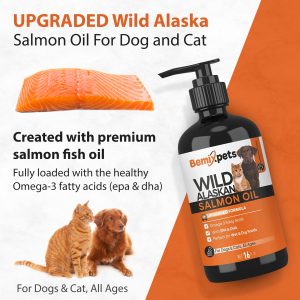Contents
What Are Fatty Tumors in Dogs?
Fatty tumors are called lipomas. Lipo meaning fat. These are an encapsulated congregation of fat cells they are non-malignant. Lipomas are not to be confused with lymphomas. Lymphomas are cancerous tumors.
Many dogs will never experience lipomas, others are covered with them!
Lipomas are a soft, movable collection of fat that sits right under the skin. The size of a fatty tumor can be small or as bigger than a tennis ball! They are typically found on the legs, chest, flank, or neck but can appear anywhere.
Lipomas are typically not a problem for dogs. Yes, they can look awful, but it usually is not necessary to remove them. Though many vets will encourage you to do so. In fact, most of the time when a lipoma is removed another one will show up in its place. So, unless the tumor is inhibiting the dog's movement or is causing pain, because it is growing near a lot of nerves, there is no reason to remove them. But there are home remedies you can use to prevent that from happening, more on this later.
What Causes Fatty Tumors in Dogs?
The main reason dogs get lipomas is because of toxin overload. The body naturally moves toxin out of the body as quickly as possible. But in today's world, there are more toxins than ever! This means that toxins can build up in the body. When they do the response of some dog's bodies is to contain the toxins in a lipoma. The reason lipomas are so close to the skin is because the body is trying to push the toxin out through the skin.
The body collects toxins together and walls them off in a tumor. This is really quite a clever system that the body has come up with. It helps to protect the liver and kidneys for overloading with the work of detoxification. While also keeping the toxins safely locked away.
Your dog comes into contact with toxins every day! Vaccines, pharmaceuticals, cleaners, lawn treatments, pesticides, heavy metals, flea and tick medications, fluoride and chlorine in the water, the list is endless! Even plastics, carpets, shampoos, toxins are everywhere.
What you feed your dog can also play a roll in the formation of lipomas. Believe it or not, some dog foods contain toxins. I'm not talking about salmonella or E.coli either. I'm talking about pesticides and herbicides that make their way into your dog's food bowl. Many of the grains, legumes, and carb sources for dog foods are heavily treated with chemicals. These make their way into your dog's food too.
There are other contaminants and toxins in dog food as well. Heavy metals and poor quality oil and ingredients are rampant in most commercial dog foods. Some foods have even been seen to have melamine and toxic fungi in them!
In fact, rancid and oxidized oils found in most kibbles can be a cause of fatty tumors. The body does not recognize these poor quality fats as food. So, the body sets up a defense, contains that fat behind a wall and creates a lipoma.
Since toxins are the cause of lipomas this is why surgery doesn't work. Just because you remove one tumor, you have not fixed the underlying issue. The toxins are still there building up and ready to form another lipoma. So, instead, you must support the body's natural pathways to get rid of toxins and reduce your dog's exposure to toxins as much as possible. Surgery tends to drive the toxins deeper and deeper into the body where they can cause much worse problems like organ damage.
Natural Remedies For Fatty Tumors
It is important to brush your dog weekly at least. This will help with early detection of the lipoma. The earlier you find the tumor the sooner you can take action.
Feeding a raw, species-appropriate diet can go a long way to reduce the likelihood of your dog getting an unsightly lipoma. Feeding high-quality fats and proteins, with an appropriate amount of veggies it one of the best things you can do for your dog's overall health!
Movement, making sure your dog gets plenty of outdoor exercises is a must! Movement helps to keep the toxins moving through the body to make their way to being eliminated. Be sure to walk your dog at least once a day, outside.
Feeding your dog phytoplankton can be helpful as well. Phytoplankton is a great source of essential fatty acids, vitamins, and minerals. Phytoplankton is very easy for your dog to digest and use. The essential fatty acids will help your dog to reduce inflammation in his body. This will free up the dog's energy to be used for detoxification.
The addition of raw apple cider vinegar (ACV) to your dog's diet can work wonders. ACV helps the body with detoxifying the liver, cleaning lymph nodes, and moving toxins to be eliminated. Give 1 tsp per 15 pounds of dog. You can add it to your dog's food or water.
Chamomile and dandelion, both of these bitter herds are useful in supporting the bodies' natural detox pathways. Dandelion also supports the gut lining.
Burdock root helps keep the liver, kidneys, and lymphatic systems moving. This keeps those toxins moving out of the body.
Chickweed is another option. This can be used topically or taken orally. It helps to move fluid and toxins through the body.
Self-heal is another herb that can be used internally or externally. The herb helps break up lipomas and get the toxins inside it, to move out of the body.
Turmeric is a powerful anti-inflammatory food. It helps with digestion and to soothe muscles and to protect the liver.
Violet can be used internally or externally. Violet will help to dissolve soft or hard accumulations in the body by supporting the lymphatic system.
Acupressure may also help. It is best to work with a veterinary practitioner who is versed in acupressure. They can help you find the right points to get the toxins to move along and out of the body.
These natural remedies are likely to take longer than removing a lipoma with surgery but they will bring true healing. Not just removing the symptom but helping to relive the cause.
It can be hard to choose natural remedies when they take longer because your friends and family and possibly even your vet will want you to cut the tumors off. But stand firm and do what is best for your dog! Surgery should never be the first response to anything, especially when the situation is not life-threatening. Remember these lipomas are a symptom only and to truly cure your dog you must help him remove the toxins from his body naturally.
Conclusion
Fatty tumors are called lipomas. These are made of toxins surrounded by fat and encapsulated by the body. They are usually close to the surface of the skin because the body is trying to get rid of the toxins. Lipomas only occur when the body is overloaded with toxins.
To prevent or help to cure lipomas you must first reduce your dog's exposure to toxins. Keep your dog away from herbicides, pesticides, over-vaccination, household cleaners, chemicals, pharmaceuticals, and any other toxic components.
There are several treatment options available to your dog. The most conventional is to remove the fatty tumor via surgery. This is not the best solution, however. With surgery you have simply removed one blob of toxins but have not treated the underlying cause. Which is, the dog is overloaded with toxins.
You can help your dog reduce his toxin load naturally with many herbs, appropriate exercise, raw apple cider vinegar, and a raw species-appropriate diet.






Leave a Reply
You must be logged in to post a comment.